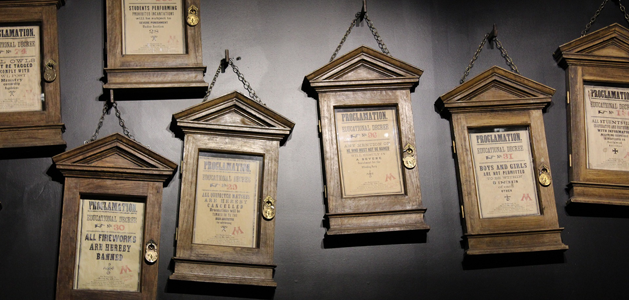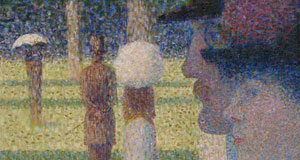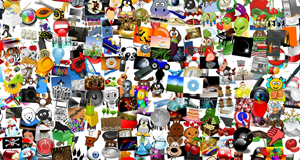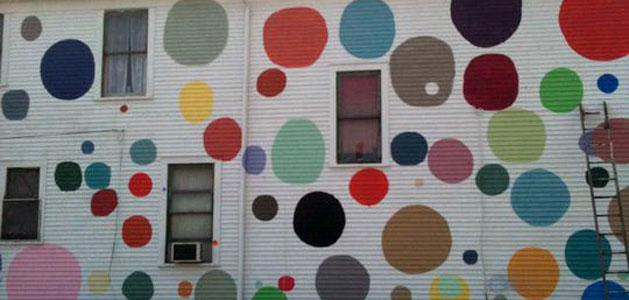A Metacognitive Collage of Me
Students become familiar with the art of collage and use this technique to create a visual representation of their social, emotional, and cultural identity along with a written artist's statement.

Task
In today's world, you need to be as good at expressing yourself through images, emblems, logos, and other graphic symbols as you are with writing. Creating a collage provides an easy-to-use medium that also helps you focus on how colors, images, print and foreground or background positioning can help you communicate your emotions, pride, and content knowledge about your culture.
Create a visual essay about yourself that will help people understand more about your personality, goals, history, and style using artistic elements such as rhythm, blending, and use of recognized emblems and shapes to make your self-advertisement clear.
Engage
A collage is a collection of images that tell a story. Collage comes from the French word coller, which means "to glue." Most collages, and the ones your students may have already made, are often created by gluing photos, fabric, and newsprint together.
You may want to examine the work of famous collage artist, Romare Bearden, who used his collages to communicate his unique cultural and personal identity.
Challenge students to create collage art that uses mixed media textured papers, logos, emblems, and hand-colored materials as a powerful visual identification, not just of what they look like, but of their personal, cultural, social, and emotional identity.
Create
Begin the creation process by having students collect images of things that represent their goals, passions, and experiences. Encourage them to:
- Clip images from print magazines and photographs.
- Take digital images of themselves, important objects, and their surroundings.
- Download public domain and copy-right friendly online images.
- Draw or paint original artwork.
Digital tools, and their layers, make adding and moving the pieces of a collage much easier for the emerging artist.
Use a creativity tool like Wixie® to create the collage.
Students can use the camera on their devices to capture self-portraits and images of needed objects, as well as easily import photos and clip art images.
As students are creating their collage, prompt metacognition and reflection by asking questions like:
- Which images in my collage help the viewer "read" the things I like?
- What images showcase key ideas about how I want to live life?
Just as artists do at gallery shows, ask students to also provide an artist's statement, explaining what their collage “says“ about their personal and cultural identity.
Ask that student statements include:
- The materials and items they used for their collage and the reason for selection of these items.
- How they used, mixed, positioned or cropped/cut these items and the reason for these choices.
- A statement of the individual and cultural self the collage describes.
Share
Print the images to display them as an art exhibit in your classroom, school, or local business. You could also collect them into one file and run them as a slideshow for a digital art installation.
You can also collect and share student collages without student names. Then peers and invited adults can comment on the collages and share their opinions about the cultural, social, and emotional qualities they represent. You might provide prompts like:
- Explain which of my likes and passions you relate to.
- Share specific collage components (colors, ideas, and textures) that stood out for you.
If collages are online, allow viewers to upload or share their responses digitally so students, visitors, and viewers of these collage artist statements can then compare and contrast their interpretations with those of other viewers as well as the collage artist's statement.
Assessment
The final image and artist's statement are useful summative assessments for a student's skill in communicating through visual and text-based mediums. During the process, you can assess their progress in their personal character sketch as well as the files they collect for their montage.
In addition, students can be given a cognitive assessment of collage arts terms such as: design, background, foreground, positioning, mixed media, artist statement, cultural ID, culturally reflective, tone, positioning, rotating, color mix, color blend, ephemera, assemblage, photomontage, digital collage, and more.
Author's Note
Special thanks to Ms. Annese Ms. Michel for their contributions to this lesson. Dina Annese implemented the collage project on the 6th grade level. Ms. Michel implemented the collage project with the 6th grade Esl class and the 6th grade Ict class.
Resources
Lynne Perella. Alphabetica: An A-Z Creativity Guide for Collage and Book Artists. ISBN: 1592531768
The Art Story - Collage Definition
Edutopia - How to Get Started with Culturally Responsive Teaching
Journal of Language and Literacy Education - Collage Praxis: What Collage Can Teach Us about Teaching and Knowledge Generation by Jessica Whitelaw
Standards
National Art Education Standards
1. Understanding and applying media, techniques, and processes. Students:
a. select media, techniques, and processes; analyze what makes them effective or not effective in communicating ideas; and reflect upon the effectiveness of their choices
b. intentionally take advantage of the qualities and characteristics of *art media, techniques, and processes to enhance communication of their experiences and ideas
Common Core Anchor Standards for English Language Arts
Writing: Production and Distribution of Writing:
CCSS.ELA-LITERACY.CCRA.W.4 Produce clear and coherent writing in which the development, organization, and style are appropriate to task, purpose, and audience.
Speaking and Listening: Presentation of Knowledge and Ideas
CCSS.ELA-LITERACY.CCRA.SL.5 Make strategic use of digital media and visual displays of data to express information and enhance understanding of presentations.
ISTE Standards for Students
6. Creative Communicator
Students communicate clearly and express themselves creatively for a variety of purposes using the platforms, tools, styles, formats and digital media appropriate to their goals. Students:
a. choose the appropriate platforms and tools for meeting the desired objectives of their creation or communication.
b. create original works or responsibly repurpose or remix digital resources into new creations.
c. communicate complex ideas clearly and effectively by creating or using a variety of digital objects such as visualizations, models or simulations.
d. publish or present content that customizes the message and medium for their intended audiences.










